Sports
UW
Story Links MADISON, Wis.–University of Wisconsin-La Crosse’s Kyra Lard has been named the recipient of the 2025 Wisconsin Intercollegiate Athletic Conference (WIAC) Softball Judy Kruckman Scholar-Athlete Award. A senior from McHenry, Ill. (East), Lard maintains a 3.60 grade point average and is majoring in public health and community health education with a minor in biology. She […]
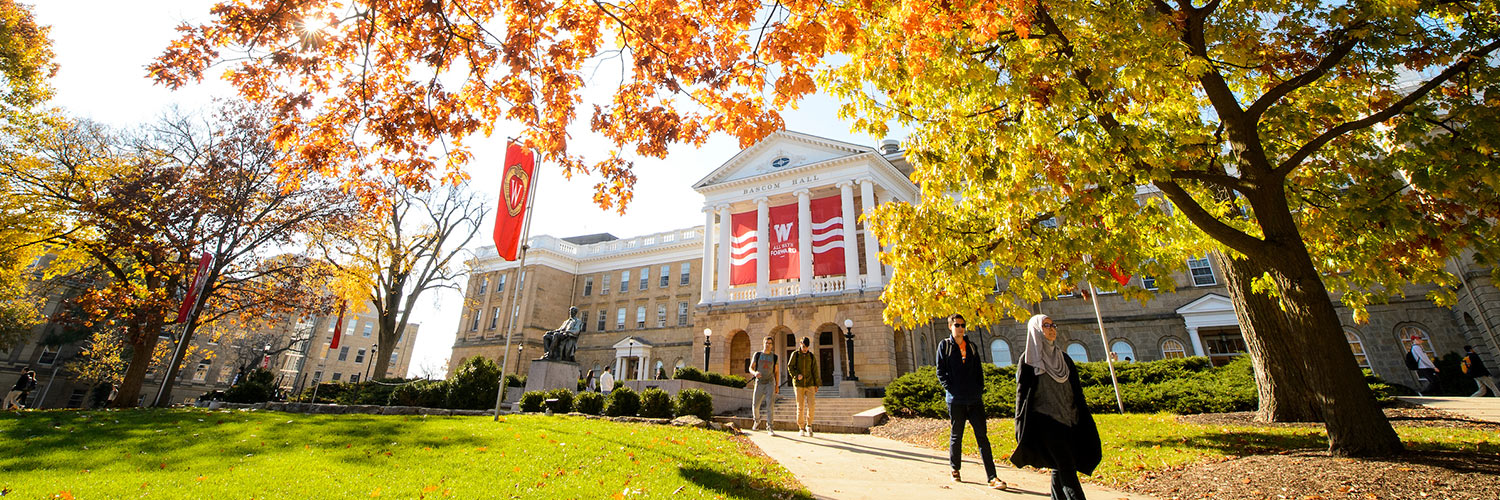


MADISON, Wis.–University of Wisconsin-La Crosse’s Kyra Lard has been named the recipient of the 2025 Wisconsin Intercollegiate Athletic Conference (WIAC) Softball Judy Kruckman Scholar-Athlete Award.
A senior from McHenry, Ill. (East), Lard maintains a 3.60 grade point average and is majoring in public health and community health education with a minor in biology. She is a two-time member of the NCAA Division III Academic All-District® Softball Team, selected by the College Sports Communicators. In 2022, she was recognized as a National Fastpitch Coaches Association (NFCA) All-America Scholar Athlete. Lard is a three-time member of the WIAC Scholastic Honor Roll and been recognized on UW-La Crosse’s Dean’s List numerous semesters.
She is a four-time All-WIAC first team selection and was tabbed the WIAC Kwik Trip Position Player of the Year in 2024, after being named the WIAC Kwik Trip Newcomer of the Year in 2022. Lard holds UW-La Crosse career records with 61 doubles and 153 RBI, and owns single season program marks with 61 RBI and eight sacrifice flies, both accomplished during the 2024 campaign. She helped UW-La Crosse win the WIAC regular-season championship in 2022, and make a NCAA Division III postseason appearance in 2023.
Lard is a member of Eta Sigma Gamma and Letters of Love, as well as UW-La Crosse’s Student-Athlete Advisory Committee and Morgan’s Message. She has served as an executive office for Eta Sigma Gamma and the Student-Athlete Advisory Committee. Lard has performed undergraduate research and is a YMCA School Age Care Group Leader.
Also nominated for this year’s scholar-athlete award were: UW-Eau Claire’s Kenna Strunsee (Sr., Waukesha, Wis./South); UW-Oshkosh’s Morgan Rau (Sr., Downers Grove, Ill./South); UW-Platteville’s Taylor Roughen (Sr., Lake Mills, Wis./Lake Mills); UW-River Falls’ Kelly Aultman (Sr., Plainfield, Ill./North); UW-Stevens Point’s Rachel Baker (Sr., Richmond, Ill./Richmond-Burton); UW-Stout’s Anna Blanford (Sr., Elmwood, Wis./Elmwood); and UW-Whitewater’s Kiarra Kostroski (Sr., Fort Atkinson, Wis./Fort Atkinson).
The WIAC Scholar-Athlete Award is named after Judy Kruckman who served as Assistant Commissioner for the WIAC from 1996-98. Prior to this appointment, she was Commissioner of the Wisconsin Women’s Intercollegiate Athletic Conference (WWIAC) from October, 1984 – September, 1996. Kruckman was the women’s athletics director at UW-Eau Claire from 1974-84, and one of the original representatives to the WWIAC when it formed in 1971. She was inducted into the WIAC Hall of Fame in 2012.
In order to be nominated for the scholar-athlete award, a student-athlete must have a minimum 3.50 grade point average. In addition, she must be in her last year of competition, or on schedule to graduate this academic year, and have competed for a minimum of two years. The award is based on academic achievements, athletics accomplishments and involvement in other campus activities, organizations and community service projects.
# # # # #
Sports
How Connor Curnick Went From Being Unable to Walk to Squatting 405 pounds
Connor Curnick was a proud U.S. Navy officer, following in the footsteps of an established military family when a catalog of injuries caught up with the Southern Californian, leaving him unable to walk. With multiple surgeries and months of physical therapy now part of his daily life, the thought of squatting over 400 pounds must […]
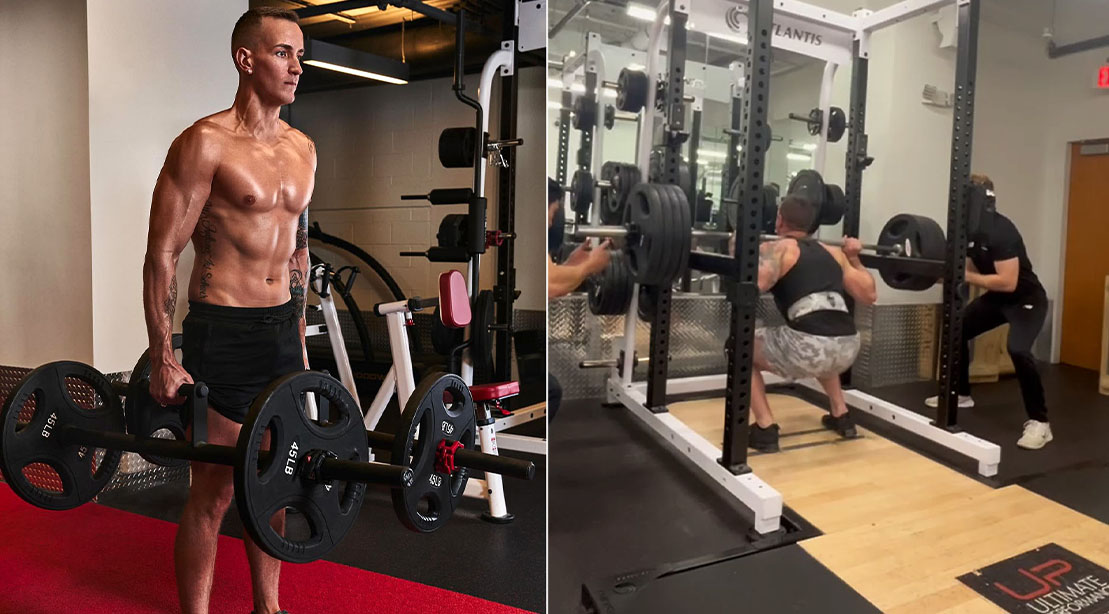
Connor Curnick was a proud U.S. Navy officer, following in the footsteps of an established military family when a catalog of injuries caught up with the Southern Californian, leaving him unable to walk. With multiple surgeries and months of physical therapy now part of his daily life, the thought of squatting over 400 pounds must have seemed incomprehensible. And yet, through consistency and professional support, Curnick crushed his goal and took control of his fitness in the process. Here’s how he did it.
Connor Curnick served for four years in the U.S. Navy, becoming a Petty Officer Third Class during that time, and received deployments to Afghanistan and East Africa, as well as multiple shorter tours of the Middle East. Before this, Curnick had proved to be a promising athlete, playing Water Polo internationally. “It’s a pretty brutal sport,” he says. “It is very physically demanding and took a toll on by body after many years of playing,” he reflects. Unfortunately, the wear and tear that he received playing Water Polo would leave him vulnerable to the harsh conditions of service.
Conner Curnick Went From Service to Serious Health Issues
“During my last deployment to East Africa, I was traveling to a remote area, and military planes are not exactly known for being comfortable, or even having seats,” explains Curnick of the toll that serving his country took on his spine.
“In my full kit, I weighed something like 315 pounds and during combat landing, I blew a disk in my back. This was the start of my physical problems. I had sciatica pain thereafter, and after years of physical therapy and less invasive treatments, I finally had surgery to remove the bulged part of the disk and to open up the canal that my nerve runs through (these are known as discectomy and laminectomy operations). It was here that doctors discovered additional issues with Curnick’s hips.
“I had a hip impingement, borderline hip dysplasia (where the hip ball does not sit properly in the socket), and labral tears on both sides, but significantly worse on my right side,” he explains. “I also had the start of osteoarthritis. So roughly 18 months after my spine surgery, I had surgery to remove the hip impingement and attempt to repair the labral tear on my right side. After a six-month healing process, the surgery wasn’t successful. So, about a year later I had my right hip replaced at the ripe old age of 29.”
Conner Curnick Vowed to Reclaim His Mobility
Down but not out, Curnick displayed the same grit that he had shown in the Navy, throwing himself into physical therapy following his operations. First, he gained back the full range of motion in his hips, and then he concentrated on being able to bear weight and keep his spine stable. He began these therapy classes using a walking frame, then transitioned to a cane, and was finally able to walk unaided by the time he completed his course. Still, Curnick felt that he needed to get back to his old self.
“I had been active and in shape my entire life, and after my string of surgeries I was in the worst shape of my life,” he tells M&F. “I knew heading into the surgery that recovery was going to be difficult, but I felt that getting back into top shape would be beneficial for the long run.”
6 months after his final surgery and living in Washington, D.C., Curnick joined the Ultimate Performance gym in Dupont where he received professional coaching. “By the end of physical therapy, I was doing things like kettlebell squats and lunges, and core strengthening, so I felt like the gym would be a good transition,” he explains. “I needed to start training again to prove to myself that I can be strong and not worry about hurting myself.”

Connor Curnick Set Himself a Mission to Squat to His Full Potential
Curnick’s initial training focused on improving his range of motion even further than he had in therapy, utilizing moves like “Standing exercises that eventually progressed to mini squats and balance work,” he explains. “After that, I started doing TRX assisted squats and lunges, starting with 3 sets x 8 reps and progressing to 4 x12. Once I was able to consistently hit 4×12 with assisted squats and lunges, I moved to doing them unassisted following the same rep schemes. Eventually I made it to doing weighted squats and lunges with light kettlebells,” he adds.
Curnick built his base during 3 full body sessions per week. “Lower body exercises consisted of a lot of split squats, goblet squats, leg extensions, and hamstring curls- usually in the three to four sets of 10 rep ranges,” says Curnick. “Once I gained decent strength in these exercises I started doing hack squats, and then eventually weighted back squats, starting out light and making logical progressions with the weight. Then, once I started getting into the 225-pound range, my trainer had me doing things like pause squats (holding at the bottom of the lift for 2-3 seconds to improve form and build strength).”
While making his brave change, Curnick is keen to point out that his progress was not linear. “I had good days and bad days throughout this entire process, and some days my body just wasn’t cooperating.” Still, he pushed on, leaning on the team at Ultimate Performance to keep him motivated and work around any obstacles. “I made it my mission to lift heavier than I ever have,” he says, inspiringly. “I felt like I had to prove the universe wrong.”
As Curnick maintained his trust in the process, the number of plates on the barbell increased and his back squat got better and better. 18 months of sweat and determination from that final surgery led to a climatic moment when Curnick finally crushed a high of 405 pounds. “I feel better now than I did before my string of injuries,” he explains. “I’m probably in the best shape of my life and I’m the strongest I have ever been. My body can now keep up with the lifestyle I want to live, and I know how and when to push myself to achieve my goals. While I do have some limitations, I know how to work within the boundaries to achieve my goals. This wouldn’t have been possible without the team at Ultimate Performance.”
While Curnick’s mission to squat heavy may be complete, he already has his sights set on the next task. “I put on some serious mass while increasing my strength numbers,” he tells M&F. “So, lately I have been focusing on leaning back down to around 10% body fat. I’m pretty close to that now, and then I’ll be focusing on adding on another 10-15 poundsof lean mass.” With a brilliant base, this inspiring individual now wants to bring his upper body up. “Exercise wise, I’m focusing more on upper body pressing movements. The goal I have now is to hit a 255 pounds overhead press, which may take a while!”
To follow Conner Curnick on Instagram, click here.
Sports
Women’s Volleyball Welcomes Kaeden Noble To Coaching Staff
Story Links SANTA BARBARA, Calif. – The UC Santa Barbara Women’s Volleyball program is excited to announce the hiring of Kaeden Noble as an assistant coach. Noble arrives as a recent graduate of Roanoke College in Salem, Virginia. Studying sport management, he captained the school’s Division III Men’s Volleyball team as […]
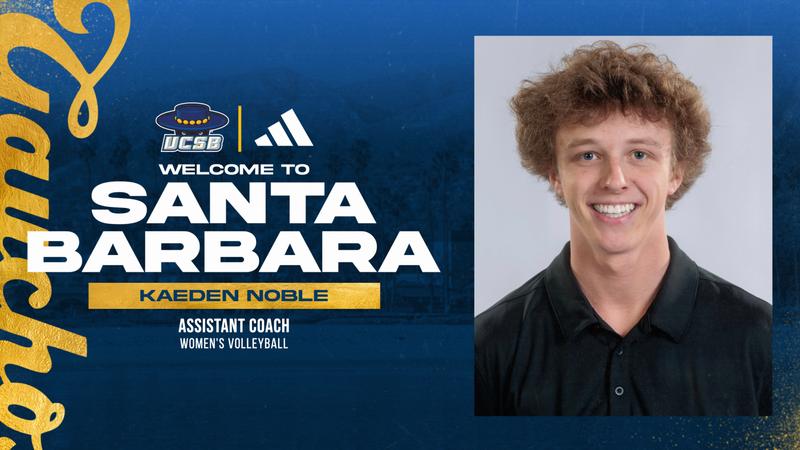
SANTA BARBARA, Calif. – The UC Santa Barbara Women’s Volleyball program is excited to announce the hiring of Kaeden Noble as an assistant coach.
Noble arrives as a recent graduate of Roanoke College in Salem, Virginia. Studying sport management, he captained the school’s Division III Men’s Volleyball team as its starting libero. He was named 2025 First Team All-Old Dominion Athletic Conference (ODAC), ending his career leading the program in digs and sets played, and holding 10 of the top 11 digs totals for a single match. Noble’s other accolades include Academic All-Conference honors and being selected for the USA D-3 Men’s Volleyball team for their summer 2024 Brazil tour.
As a coach, Noble was a student assistant on the Roanoke Women’s team through the 2024 season. Previously, he helped out with the East Carolina Junior Volleyball Club and was an assistant coach at his alma mater South Lenoir High School in Deep Run, North Carolina.
“I am extremely excited and grateful for the opportunity to work alongside this amazing staff and with this team,” Noble said. “The vision here is clear, and I’m proud to be part of what’s ahead.”
The Gauchos will begin their 2025 season in late August.
Sports
John U. Bacon examines the House v. NCAA settlement and how it changes college sports
College sports have entered a new era. Late last week, a California court approved a legal settlement that ends a longstanding ban on schools paying athletes directly. The House settlement is named after former Arizona State University swimmer Greg House, who sued the NCAA and five conferences. The agreement settles multiple lawsuits that were combined. […]
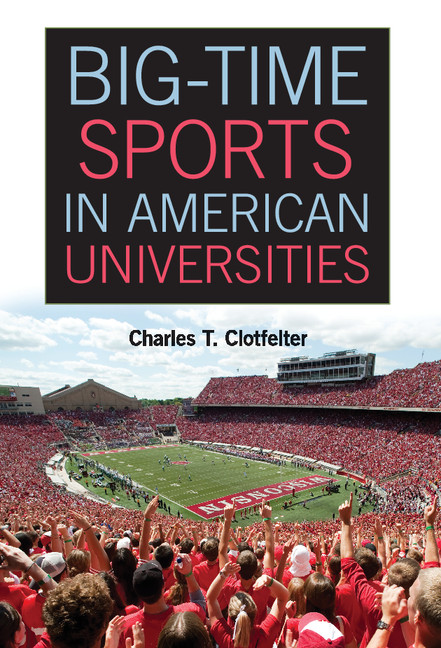


College sports have entered a new era.
Late last week, a California court approved a legal settlement that ends a longstanding ban on schools paying athletes directly. The House settlement is named after former Arizona State University swimmer Greg House, who sued the NCAA and five conferences. The agreement settles multiple lawsuits that were combined.
Michigan Public sports commentator John U. Bacon joined Morning Edition host Doug Tribou to take a closer look at the settlement.
Doug Tribou: There’s been a long run-up to this settlement and some things changed along the way, so to help our audience get caught up, I want to present a few of the key results and have you give us a summary of your thinking about each of them. Then we’ll get into some larger questions.
First, the deal creates the framework for colleges and universities to pay their athletes directly. Right now, the total amount allowed for each school is about $20.5 million based on a calculation on TV revenue, ticket sales, and other factors, which some schools disputed. What’s your view of the direct revenue sharing plan?
John U. Bacon: Well, first, that’ll be the first of about ten thousand disputes, but anyway. I find it inevitable. It’s long overdue in many ways, but it’s going to be incredibly complicated. For all the money that college sports produces, all but a few athletic departments are losing money. And one of the early complications: Will this turn student athletes into employees? If so, that will complicate their lives too, including taxes, kids! Hey, have fun! [Laughs]
“For all the money that college sports produces, all but a few athletic departments are losing money.”
John U. Bacon
DT: [Laughs] The agreement also caps roster limits for sports, which is likely to eliminate the concept of the walk-on athlete as we know it. But the House settlement also allows schools to offer every athlete a full scholarship. What jumps out at you there?
JUB: Well, if you’re looking at the quote-unquote “spirit of college athletics,” you know, sound mind, sound body, a true student-athlete, this is going to impinge on that quite a bit. Not only will walk-on athletes likely be reduced, you’re going to put a lot of pressure on schools to limit or cut their Olympic sports like gymnastics, swimming and track, which almost never make any money.
DT: Another major pillar of the House settlement is $2.7 billion in back pay, going to athletes who competed between 2016 and 2024 and were not able to maximize their name, image and likeness earnings — NIL — because of old rules. The NCAA and its conferences will pay out that back pay over time. What’s your view on the back payments for athletes?
JUB: It’s a good idea. It’s more parity for the athletes. Certainly they had it coming, but it’s also going to be another very large expense — $2.7 billion — that will put pressure on everything else.
DT: And we want to note here that a group of eight women has appealed the settlement, saying the division of the back payments is not fair to female athletes and that its structure violates aspects of Title IX, which prohibits gender discrimination in education. It appears that appeal will delay the start of those back payments, but the revenue sharing with current athletes is likely to move forward.
John, I’m just going to take a guess that this will not be the last legal action we’ll see…
JUB: [Laughs] Doug, I love you. And we’re going to be talking about this every Friday for about the next five years. So yeah, I think your impulse is correct here.
In an open letter, athletic director Warde Manuel announced the University of Michigan has a long-term goal of reducing its athletic department staff by 10 percent as a cost-saving measure.
DT: Let’s turn to some local effects. After the settlement was finalized, University of Michigan Athletic Director Warde Manuel published a letter about U of M’s plans. Manuel said the changes create a nearly $27 million deficit for the athletic department — from more than $6 million in new scholarship money the department will pay out and that maximum $20.5 million that all universities are allowed to pay directly to athletes.
Manuel listed a lot of ways U of M can make up the short-term and long-term costs. One that stood out to me was, “the department staff will gradually decline in number through two methods: attrition, with a long-term goal of a 10 percent reduction in total staff, and through a stricter approval process for new hires.”
Were you surprised to hear that the Michigan athletic department is planning to downsize?
JUB: Well, I was impressed by Manuel’s directness and his plan here, but I was a little surprised because this move was about ten years overdue. Manuel inherited a bloated payroll from a previous athletic director, Dave Brandon, that had increased the budget of the department from $100 million to $140 million in just four years. And Warde had done nothing to reduce it until now. But better late than never.
And I think his approach — attrition with fewer future hires — is both smart and compassionate. Trust me, every athletic department out there will be doing the same, so Michigan has very little choice here.
DT: Michigan State’s new athletic director, J Batt, who was just announced as the AD this month, also released a letter. What a time to get a new job, by the way, you take a new job as an AD and they rewrite how college sports works [Laughs].
JUB: [Laughs]
DT: He did note that MSU is committed to distributing the maximum amount. Again, that’s that $20.5 million to its athletes. He also promised to share more details about MSU’s plan in the near future.
Some people might be wondering about the schools that do not have the ability to do that sort of maximum spending and that don’t have these full scale programs that you see at U of M or MSU or Ohio State. For example, Oakland University has a very competitive basketball program at the Division I level, but does not have an NCAA football team.
How do you expect this to affect the schools in those types of situations?
JUB: For those schools, this is going to be brutal. It’s going to increase the already growing gap between the haves and the have-nots. Oakland U., [Mid-American Conference] schools like Eastern [Michigan], Western [Michigan], and Central Michigan, they’re going to have some very tough choices. And they’re going to find it very hard to compete in a lot of sports and they’re going to start cutting sports. It’s almost inevitable.
Editor’s notes: Some quotes in this article have been edited slightly for length and clarity. You can play the audio of the full interview near the top of the page.
The University of Michigan holds Michgan Public’s broadcast license.
Sports
Readers vote volleyball player Riley Greene Sarasota-Manatee Girls Athlete of the Year
The Sarasota Herald-Tribune is proud to honor area high school sports programs with our annual Sarasota-Manatee High School Sports Awards, which was held on Friday, May 30, 2025, at the Van Wezel Performing Arts Hall in Sarasota. Throughout the year, The Herald-Tribune selects an All-Area team in each FHSAA sport. From those teams, we select Players […]
The Sarasota Herald-Tribune is proud to honor area high school sports programs with our annual Sarasota-Manatee High School Sports Awards, which was held on Friday, May 30, 2025, at the Van Wezel Performing Arts Hall in Sarasota.
Throughout the year, The Herald-Tribune selects an All-Area team in each FHSAA sport. From those teams, we select Players of the Year for every sport, and also an overall Girls Athlete of the Year.
We selected Riverview High softball player Allison Cole as our Girls Athlete of the Year. We then asked you, our readers, to vote and select the athlete you think deserved to be the Athlete of the Year.
After a week of voting, you selected Cardinal Mooney Catholic’s volleyball player Riley Greene with 51.36% of the vote. The 6-foot-1 middle hitter was the Cougars’ kills leader with 169. In the first season of head coach Allan Knight, the Cougars went 22-5, losing to Berkeley Prep in the regional final. Greene had an impressive kill percentage of 47.3 while averaging 2.2 kills per set. For Knight’s team, she added 44 blocks and 44 digs.
To see the poll results CLICK HERE
Sports
George Pickens Receives Endorsement of Cowboys Captain
George Pickens Receives Endorsement of Cowboys Captain originally appeared on Athlon Sports. FRISCO – George Pickens arrived at The Star with a clean slate inside the building, but also lots of critics outside of it. Advertisement Advertisement Advertisement Some in the Pittsburgh Steelers organization said it was Pickens’ behavior on the field and in the […]



George Pickens Receives Endorsement of Cowboys Captain originally appeared on Athlon Sports.
FRISCO – George Pickens arrived at The Star with a clean slate inside the building, but also lots of critics outside of it.
Advertisement
Some in the Pittsburgh Steelers organization said it was Pickens’ behavior on the field and in the locker room that led head coach Mike Tomlin to finally give up on the talented receiver. The Cowboys traded for him in an effort to provide a reliable No. 2 receiver opposite CeeDee Lamb.
Despite Pickens’ reputation, the Cowboys immediately welcomed him with open arms. Both vice president Stephen Jones and Lamb himself claimed Pickens is a “No. 1” receiver.
Now a couple of days into minicamp and quarterback Dak Prescott is adding to the chorus of positivity surrounding the Cowboys’ newest weapon.
“I think that’s why you should never really listen to what somebody else says about somebody,” Prescott said about Pickens. “I think you should find out for yourself who they are and allow them to reveal their character to you. The guy’s been great. He’s been phenomenal.
Advertisement
“It’s a guy that loves football, loves his teammates, and he’s been excited every day that he’s been there. He’s been early, too, so no concerns on the personal matters of G.P. or anything about it. I’m just super excited that he’s on our team. He’s one of us, and he’s our brother, and he’s all about continuing to grow and making sure he’s putting the best out there; and that’s his approach.”
Related: ‘Legacy Be Damned’ as Cowboys’ Dak Focuses On Super Bowl ‘Sanity’
Related: Jerry’s Cowboys Should Sign These Five Stars Immediately
This story was originally reported by Athlon Sports on Jun 13, 2025, where it first appeared.
Sports
Augusta University Announces Addition of Men’s and Women’s Indoor Track and Field
Story Links AUGUSTA, Ga. – Augusta University Athletics is proud to announce the addition of men’s and women’s indoor track and field, with competition beginning in the 2025–26 academic year. The new offering marks the next step in a series of strategic investments into Augusta’s nationally competitive cross country and track and […]
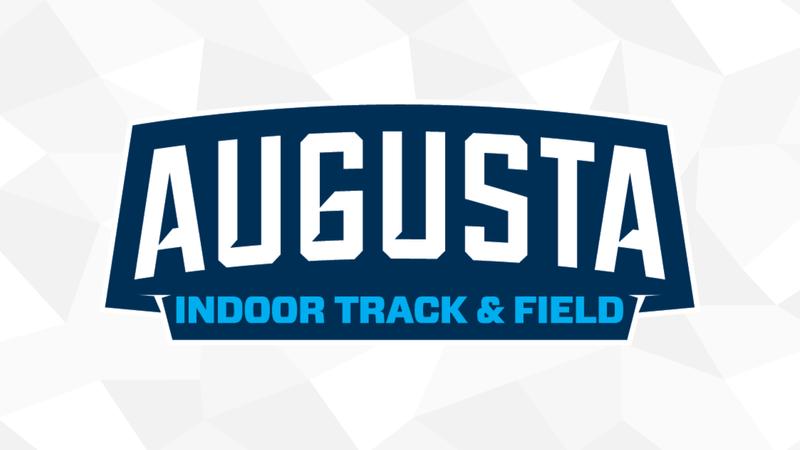
AUGUSTA, Ga. – Augusta University Athletics is proud to announce the addition of men’s and women’s indoor track and field, with competition beginning in the 2025–26 academic year.
The new offering marks the next step in a series of strategic investments into Augusta’s nationally competitive cross country and track and field programs. With this move, Augusta joins many of the premier NCAA Division II institutions that provide year-round opportunities for their cross country and track student-athletes. It also marks the first NCAA sport added by Augusta University since 2013.
“This is a huge step for our program,” said Jacob Burgamy, head cross country and track & field coach. “Our athletes are very excited about having an additional opportunity to compete for a championship each year and have another full season of competition. Our team has had a lot of growth and progress over the past couple of seasons, and I’m very grateful for the investment that Augusta University and our AD, Ryan Erlacher, have been putting into us to help us continue that upward trend.”
Burgamy, named head coach in March 2023, will lead the indoor programs in addition to his current roles. Under his leadership, Augusta’s men’s cross country team has captured three consecutive Peach Belt Conference titles and earned national rankings each year. In fall 2024, Jordan Robertson became the program’s first cross country All-American, finishing among the nation’s top performers at the NCAA Championships in Sacramento. On the track, Avery Jaynes made history in spring 2025 as Augusta’s first NCAA Track & Field All-American with a podium finish in the 10,000m at the national meet in Pueblo, Colorado.
Indoor track will be a tremendous addition to our sports sponsorship lineup,” said Director of Athletics Ryan Erlacher. “Under Coach Burgamy’s excellent leadership, I have no doubt our indoor programs will be extremely competitive right away. We have some of the best athletes in the country and we look forward to seeing them compete for indoor championships in 2025-26.”
The launch of indoor track and field is a natural progression for a program that continues to raise its competitive standard. It also creates year-round competitive and developmental opportunities for Augusta’s distance, sprint, jump, and throw athletes—building on the momentum established across recent seasons.
This addition represents only one piece of a larger vision for the future of track and field at Augusta. As the program continues to grow, more enhancements are on the horizon to support the success and experience of Jaguar student-athletes.
Fans of Jaguar Athletics can GIVE by clicking here. Fans of Jaguar Athletics can subscribe to the email listserve by clicking here. Fans can follow Augusta University Athletics at www.AugustaJags.com and receive updates on Facebook at Augusta University Athletics and on Instagram @augustajags
-

 Health1 week ago
Health1 week agoOregon track star wages legal battle against trans athlete policy after medal ceremony protest
-

 Professional Sports1 week ago
Professional Sports1 week ago'I asked Anderson privately'… UFC legend retells secret sparring session between Jon Jones …
-

 NIL3 weeks ago
NIL3 weeks ago2025 NCAA Softball Tournament Bracket: Women’s College World Series bracket, schedule set
-

 College Sports2 weeks ago
College Sports2 weeks agoIU basketball recruiting
-

 Professional Sports1 week ago
Professional Sports1 week agoUFC 316 star storms out of Media Day when asked about bitter feud with Rampage Jackson
-

 Rec Sports2 weeks ago
Rec Sports2 weeks agoScott Barker named to lead CCS basketball • SSentinel.com
-

 Rec Sports2 weeks ago
Rec Sports2 weeks agoJ.W. Craft: Investing in Community Through Sports
-

 Motorsports2 weeks ago
Motorsports2 weeks agoNASCAR Penalty Report: Charlotte Motor Speedway (May 2025)
-

 Motorsports2 weeks ago
Motorsports2 weeks agoRockingham Speedway listed for sale after NASCAR return
-

 NIL3 weeks ago
NIL3 weeks agoGreg Sankey: ‘I have people in my room asking, why are we still in the NCAA?’































